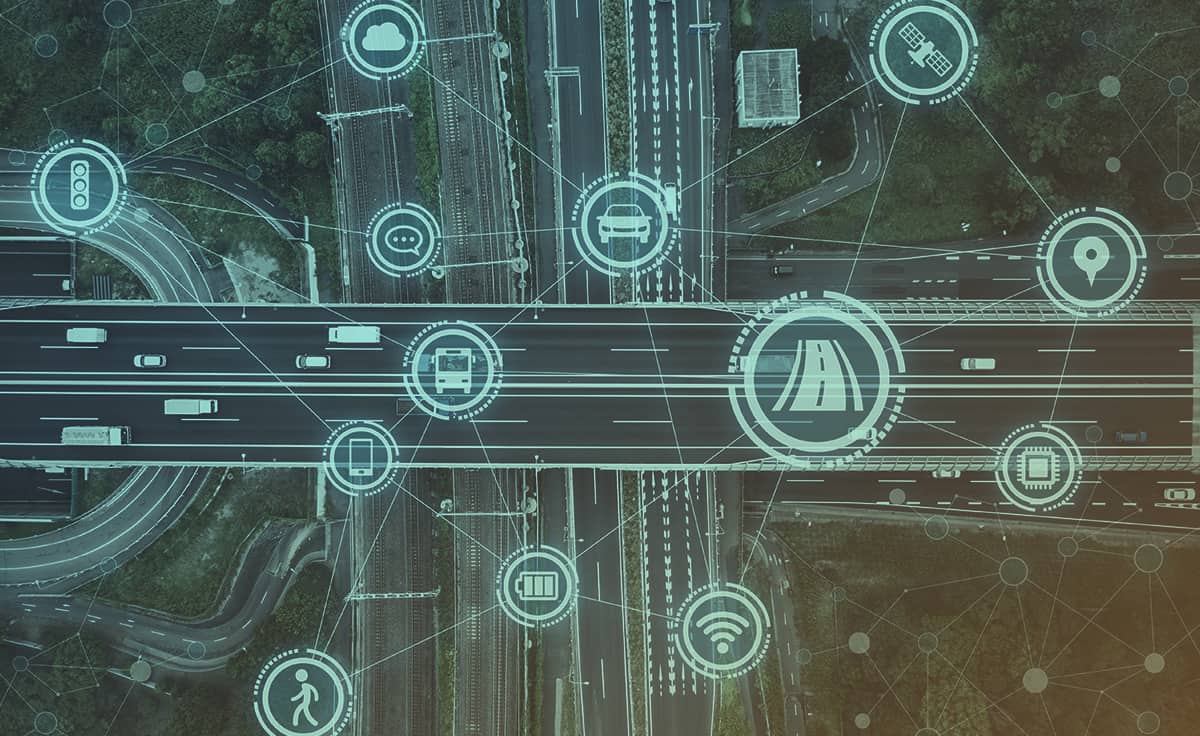An ELD is an Electronic Logging Device that the law requires freight carriers to use to meet the requirements of the ELD mandate. The device is DOT-certified electronic hardware that connects to the vehicle’s engine and records a truck driver’s service status throughout the day. These onboard devices record compliance with HOS regulations and produce RODS reports.
The device features on-screen viewing and may include audio alerts so drivers can monitor their current hours of service status accurately and conveniently without distracting their attention from the road. Equipped with reporting capabilities and various file transfer options, ELDs can print or digitally transfer hour logs when requested by DOT inspectors to verify compliance with HOS regulations.
Many types of ELD models, systems, and programs are available on the market. They range from basic off-the-shelf models intended solely to meet the requirements of the ELD mandate to full-featured telematics versions designed as components of a more comprehensive fleet management system. Read on to learn more about what basic ELDs can do, what additional features you can include, and how to choose the best ELD solution for your trucking business.
What do ELDs do?
There are two basic categories of devices to consider when investing in ELD technology. Baseline models are designed to do little more than meet the ELD requirements. Enhanced systems are designed with advanced features and telematics to help maximize operational efficiencies and productivity.
Basic category ELDs are configured with minimal requirements to comply with the FMCSA’s ELD mandate. They primarily record a driver’s service status and electronically log HOS. The data is recorded in real-time and available on demand for roadside inspections.
All basic ELDs automatically record:
- Date
- Time
- Location within a one-mile radius
- Engine hours
- Vehicle miles
- Identification information for the driver, authenticated user, vehicle, and motor carrier
In addition, each action, from the pre-trip to post-trip activity, is logged, including:
- Driving time
- On duty not driving time
- Loading and unloading
- Fueling
- Off-duty time
- Sleeper berth time
NOTE: Depending on the model you select, these logged actions may be automatically recorded, or you may have to input them manually.
When the vehicle moves faster than 5 mph the ELD automatically switches into driving mode. If the vehicle is stationary for more than five minutes, the driver is prompted by the device to confirm the driving status. If not manually responded to within one minute, the ELD will switch to off-duty status.
Edits and annotations can be entered for situations such as when a driver forgets to update the e-log’s status or makes a mistake. Drivers who make changes to the data must include a note to explain the reason for the edit, certify that the correction is accurate, and resubmit the records.
Click here for more information and guidance on FMCSA’s required functionality and use of ELDs.
What more can ELDs do?
Basic ELDs are like seatbelts – you must have them installed in your cab and use them. As long as the device is DOT-certified, the type of ELD you invest in is entirely up to you. Many trucking companies invest in ELD solutions with features and functions far beyond the required specifications.
Full-featured ELDs are designed to record an extensive range of informative data. With added features, they can become a critical component of a more comprehensive fleet management system. Used to their full benefit, many ELD systems can contribute significantly to improved safety, efficiency, and sustainability.
For example, when equipped with advanced telematics such as GPS tracking, gyroscopes, and accelerometers, the best ELDs can assist owner-operators and fleet managers with the following:
Compliance: Safety officials are now using ELDs to transfer data files in the field. The device must be registered with FMCSA and comply with the ELD rule’s technical specifications to transmit data successfully.
Dispatch and routing: The best ELDs have a built-in GPS tracker that provides real-time location information. This data can be beneficial for dispatch and routing because you can see exactly where all your vehicles are at any given time without contacting your drivers.
Maintenance: Because ELDs plug into a vehicle’s onboard diagnostics (OBD) port, they can pull critical engine data—like mileage and fault codes—for scheduling preventative maintenance and responding quickly to reactive repairs. Plus, drivers can use the smartphone app with their ELD to complete electronic driver vehicle inspection reports (DVIRs). Easy reporting increases efficiency and reduces the paperwork your back office has to handle.
Safety: Many ELDs have a built-in gyroscope and accelerometer that detect extreme driving events like harsh braking, turning, and collisions. You can use this data to coach drivers on safe driving. Historical location data can be used to exonerate innocent drivers from false claims.
Security and loss prevention: The best ELD solutions include software that can help you leverage your data to improve security and prevent loss. For example, some models offer a geofencing feature that allows you to create a virtual boundary around any location, like a yard or terminal. Then, leveraging your ELD’s real-time GPS capabilities, you can be alerted whenever a vehicle leaves your geofence, making it possible to detect potential security issues or theft proactively.
Reporting: ELDs enable robust reporting on the data they collect, helping fleets more easily identify areas for efficiency improvement and cost savings. For example, fleet managers can see idling time and extreme events by driver or vehicle, enabling you to effectively coach drivers, reduce fuel costs, and minimize risky driving behavior.
So, as you can see, spending time evaluating options to find the right ELD can pay dividends well beyond the device’s basic functionality.
What is the right ELD system to invest in?
First and foremost, no matter what type of ELD you choose, check to ensure the specific ELD model you are considering complies with the technical specifications required by the FMCSA. Go to the FMCSA’s list of registered, self-certified ELDs to identify qualified systems.
Regarding product selection, each owner operator, or fleet manager is best suited to decide what ELD system will provide the best solution for their unique trucking business. Start by looking at your company’s immediate needs, and then consider your company’s long-term plans.
Once you have done that, define your ELD requirements based on your company’s present and future needs. Write down the device’s features and benefits you want. Consult with others in your company, fellow truckers, and with ELD providers. Gather information, advice, and technical details. You’ll then be best positioned to decide on the right ELD system to invest in.
In broad terms, there are three main groupings of ELD’s.
- Do you intend to stay small and run lean with just one or two trucks? If so, consider basic category ELDs.
- Established fleets, companies with growth plans, and operations looking to maximize efficiencies should consider ELD systems with features to improve productivity and streamline administrative tasks.
- Large fleets with TMS programs or other integrated systems need to equip their ELDs with advanced telematics to connect truckers to their back office in real-time.
Working within the correct ELD grouping for you, refine your selection by identifying specific features as noted above. In the end, the time spent evaluating your needs and comparing different products will help ensure you get the most from your investment.
Conclusion
ELDs are required to record drivers’ compliance with HOS regulations. They can be simple electronic logging devices or components of a more extensive network with integrated systems. No matter which type of device or system you invest in, it adds to your overall operational costs. Ensure ELD expenses are included in your cost-per-mile calculations before setting your freight rates.
Here’s one last thought to complete this discussion on ELDs – always ensure you have adequate cash flow to cover the added costs of operational management products like ELD’s. ELD service charges are just one of many bills that must be paid to keep your truck(s) running. So ensure you have a cash flow solution, such as freight factoring, to keep up with bills, improve accounts receivable management, and provide more access to more capital when you need it.
ABOUT eCapital
At eCapital, we accelerate business growth by delivering fast, flexible access to capital through cutting-edge technology and deep industry insight.
Across North America and the U.K., we’ve redefined how small and medium-sized businesses access funding—eliminating friction, speeding approvals, and empowering clients with access to the capital they need to move forward. With the capacity to fund facilities from $5 million to $250 million, we support a wide range of business needs at every stage.
With a powerful blend of innovation, scalability, and personalized service, we’re not just a funding provider, we’re a strategic partner built for what’s next.




